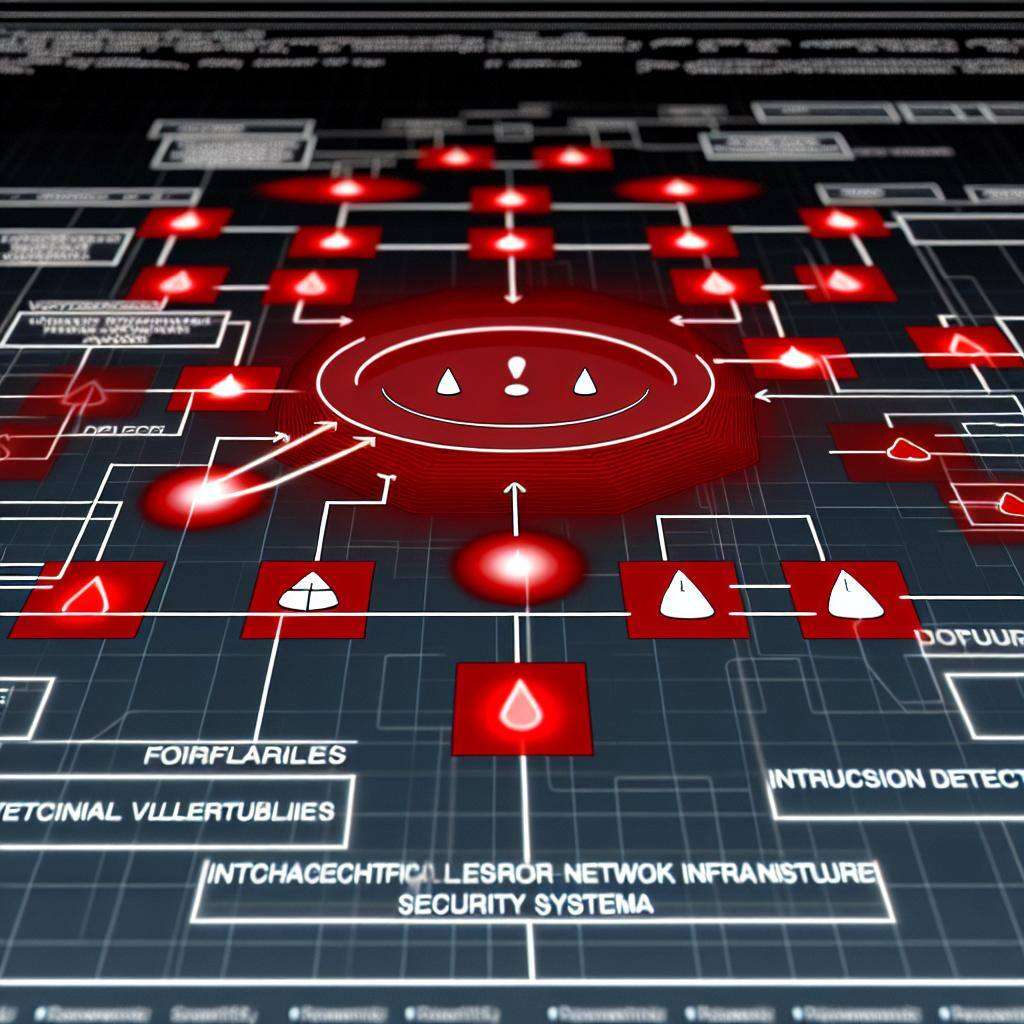You Know You Need to Prioritize Cyber Security - What's Next?
If you're steering a small or medium-sized enterprise (SME), you've probably heard the buzz about cyber security more times than you've had coffee this morning. It's everywhere - in articles, podcasts, and maybe even popping up in your dreams at this point. You get it, cyber security is crucial. But with the avalanche of tools, buzzwords, acronyms, and, let's not forget, those daunting price tags, how do you even begin to tackle this beast? Let's demystify this together and figure out how to sift through the chaos to prioritize your cyber security efforts responsibly. Buckle up!
The Starting Line: Understanding Your Needs
As you take that deep breath and prepare to dive into the world of cyber security, remember that the first step is always the most crucial. Understanding the unique needs of your business is like laying the foundation for a sturdy fortress. Just as no two businesses are exactly alike, your approach to cyber security should be tailored to fit your specific requirements. Take stock of what information is most valuable to you - whether it's the personal details of your customers, closely guarded trade secrets, or even that secret family recipe that has unexpectedly turned into your best-selling product. By identifying what holds the most significance for your business, you can prioritize your efforts to safeguard it effectively. Remember, protecting what matters most starts with knowing what that is.
Decoding the Jargon: Simplify, Simplify, Simplify
Acronyms can be overwhelming, like trying to decipher a bowl of alphabet soup. Let's simplify things. Begin by focusing on the essentials: Antivirus (AV), Firewalls, and Two-Factor Authentication (2FA). These are akin to the locks on your doors and windows at home, providing a crucial initial layer of defense. Once these foundational measures are in place, you can gradually explore more advanced security solutions such as Endpoint Detection and Response (EDR) or Security Information and Event Management (SIEM). However, it's important not to get ahead of yourself. Starting with the basics sets a strong groundwork for building up your cyber defenses effectively.
When it comes to these funny acronyms, it's important that you sit down with someone and really understand what they do, and why you need them. MFA (Multifactor Authentication) isn't just something you should do because insurance asks you to. It's important because it makes it harder for people to hack your devices. EDR/MDR/XDR watch your devices to see if they've got questionable connections or files saved to them. Firewalls, Cloud Storage, all of these things are part of a larger plan to keep you safe.
Filtering the Noise: Identify What Really Matters
Seeking guidance from professionals in the field of cybersecurity can provide invaluable insight and clarity when navigating the complex landscape of online security. Cybersecurity forums, reputable tech blogs, and industry-specific guides offer a wealth of knowledge and resources to help SMEs make informed decisions about protecting their digital assets. Don't hesitate to reach out to experts for a consultation – their expertise and guidance can help you tailor your cybersecurity measures to suit your unique business needs, all without any cost to you. Sometimes, a simple conversation with a knowledgeable professional is all it takes to dispel confusion and pave the way for a more secure digital future.
Making Smart Investments: Where to Put Your Money
Yes, cyber security can be pricey, but think of it as an investment in your business's future. However, you don't need to break the bank to be secure. Prioritize your spending based on your most critical assets. Start with the essentials I mentioned earlier and build from there. Also, consider managed security services. They can be a cost-effective way to get top-notch security without having to hire a full in-house team.
Another note on the costs of cyber security tools.... Imagine your business gets hacked. Your business loses 10 weeks of data, and can't do business for 2 weeks. How much would that cost? How much would it cost as far as credibility in the eyes of your clients? How much would it cost to have employees sitting around with nothing to do? An insurance claim? These are all things to consider when you tally up the overall costs of having cyber security.
What are Managed Services? Where should you be spending your time?
One of the big questions in IT, Managed Services, and Cyber Security, is "Where is my time best spent?"
Let's delve into the world of managed services. At Cyber Advisors, we step in to tackle all your IT needs. Whether it's fixing connectivity issues one week or installing servers the next, we act as your dedicated IT team or provide support to your existing one, handling tasks they may not have the capacity for.
Now, onto managed security. It's a similar concept. We take charge of your security needs by installing and monitoring cyber security tools. Our 24/7 Security Operation Center is always on guard, ready to address any issues and keep your company shielded from cyber threats.
Consider these scenarios: If you're a one-person show handling all tech decisions, offloading some tasks could be a huge relief and boost to your revenue-generating activities. For businesses with a small IT team juggling multiple roles, including cybersecurity, there are better options available. And if your tech-savvy team lacks expertise in cybersecurity, entrusting us to manage this aspect allows them to focus on their strengths while we handle the security measures we're trained for.
Remember, we're not here to replace anyone. As a managed service provider, Cyber Advisors tailor our services to your specific needs. Whether it's freeing up your IT team to focus on network infrastructure or preparing devices for use, we're here to enhance efficiency and support your business goals.
Building a Culture of Security: Everyone Plays a Part
Cyber security isn't just the job of your IT department or the fancy new tools you've installed. It's a team sport. Educating your employees about basic security measures can make a huge difference. Simple habits like recognizing phishing attempts, using strong passwords, and understanding the importance of regular software updates can significantly bolster your defenses.
Next Steps: Action Plan
Now that we've broken it down, it's time to create an action plan. Start with a cyber security audit to identify your current position. Then, prioritize your needs, set a budget, and begin implementing the basics. As you grow, keep evaluating your security measures and adjusting as needed. Cyber security is an ongoing process, not a one-and-done deal.
What's the difference between a Cyber Security Assessment, Vulnerability Assessment, and Penetration Test?
Cyber Security Assessment, Vulnerability Assessment, and Penetration Test. While they all play vital roles in strengthening your defenses, they each have distinct purposes and methodologies.
Cyber Security Assessment
Think of a Cyber Security Assessment as a comprehensive health check-up for your company's digital security posture. It's like sitting down with a doctor who looks at your entire health history, lifestyle, and current symptoms to provide a holistic view of your well-being. In the cyber world, this assessment examines your organization's security policies, controls, processes, and mechanisms. It's designed to identify the breadth and depth of your cyber defenses, uncover any potential weaknesses, and evaluate how well you're protecting your assets against various threats.
A Cyber Security Assessment covers a wide range of areas, including:
- Risk management practices
- Data protection and privacy
- Network and system security
- Employee training and awareness
- Incident response capabilities
The goal? To give you a 360-degree view of your security readiness, along with recommendations for improvement.
Vulnerability Assessment
A Vulnerability Assessment, on the other hand, is more like a targeted diagnostic test that looks for specific weaknesses in your systems and software. Imagine going to the doctor because you're worried about a particular health issue, and they run tests to see if there's a problem in that area. Similarly, a Vulnerability Assessment scans your IT infrastructure to identify known vulnerabilities, such as outdated software, missing patches, or misconfigurations, that could potentially be exploited by hackers.
This process involves:
- Scanning networks and systems with automated tools
- Cataloging and analyzing identified vulnerabilities
- Prioritizing vulnerabilities based on their severity and potential impact
The objective is to pinpoint specific areas of weakness so they can be remedied before an attacker has the chance to exploit them.
Penetration Test (Pen Test)
Finally, a Penetration Test (or Pen Test) is akin to a stress test. It's not just about looking at the numbers and running diagnostics; it's about putting those systems through their paces to see how they hold up under pressure. In a Pen Test, ethical hackers (or penetration testers) actively try to exploit vulnerabilities in your network, applications, and other systems. They use the same tactics and techniques a real attacker would employ, but in a controlled and safe manner.
Key aspects of a Pen Test include:
- Identifying exploitable vulnerabilities
- Attempting to breach the security controls
- Documenting the steps taken and how successful they were
- Providing detailed findings and recommendations
The aim of a Pen Test is to simulate a real-world attack to see how well your defenses stand up to an active threat. It not only reveals vulnerabilities but also tests your detection and response mechanisms.
In Summary
- Cyber Security Assessment provides an overarching review of your security posture, policies, and practices.
- Vulnerability Assessment zeroes in on specific vulnerabilities in your systems and software.
- Penetration Test actively attempts to exploit vulnerabilities and breach your defenses to understand the real-world effectiveness of your security.
Together, these assessments give you a comprehensive understanding of your cyber security strengths and weaknesses, allowing you to make informed decisions to bolster your defenses.
Also, let's talk about tools vs managed security for a moment. Would it make more sense for your internal team to monitor these tools, or more sense for our team to do it? We manage the infrastructure security for hundreds of companies. So if it makes more sense to have our Security Operation Center look after your security too, we can do that. On the other hand, if you have an internal team that has experience, and they just want the tools in place, we can help with that as well. Regardless of your needs, we're here to help you get what you're looking for.
Wrapping Up
Navigating the cyber security landscape can feel like hacking through a jungle with a butter knife. But with a little guidance, the right tools, and a dash of determination, you can protect your business and sleep a little easier at night. Remember, the goal isn't to eliminate all risk—that's impossible. Instead, focus on managing risk in a way that aligns with your business goals and keeps your valuable assets safe. You've got this!





